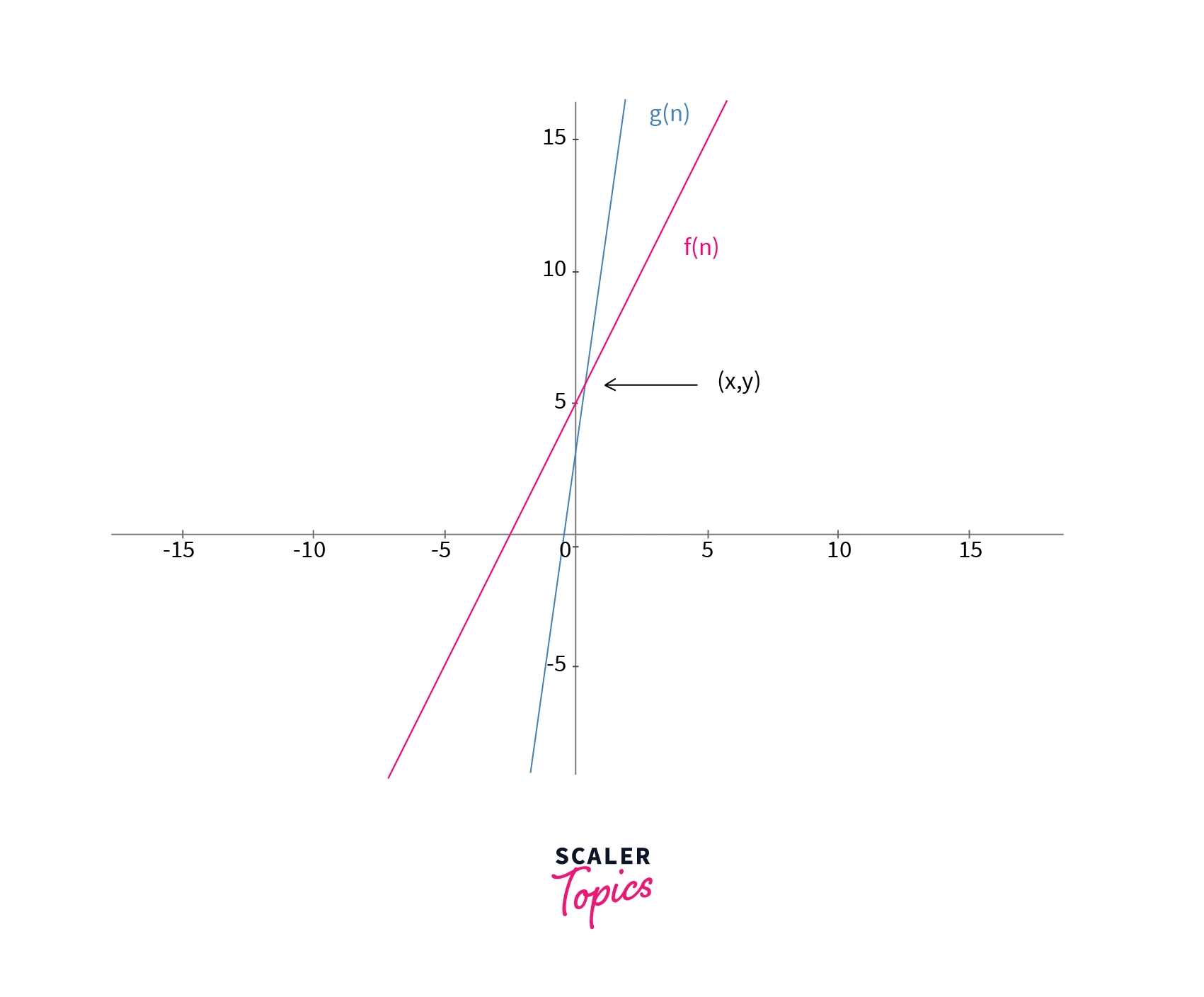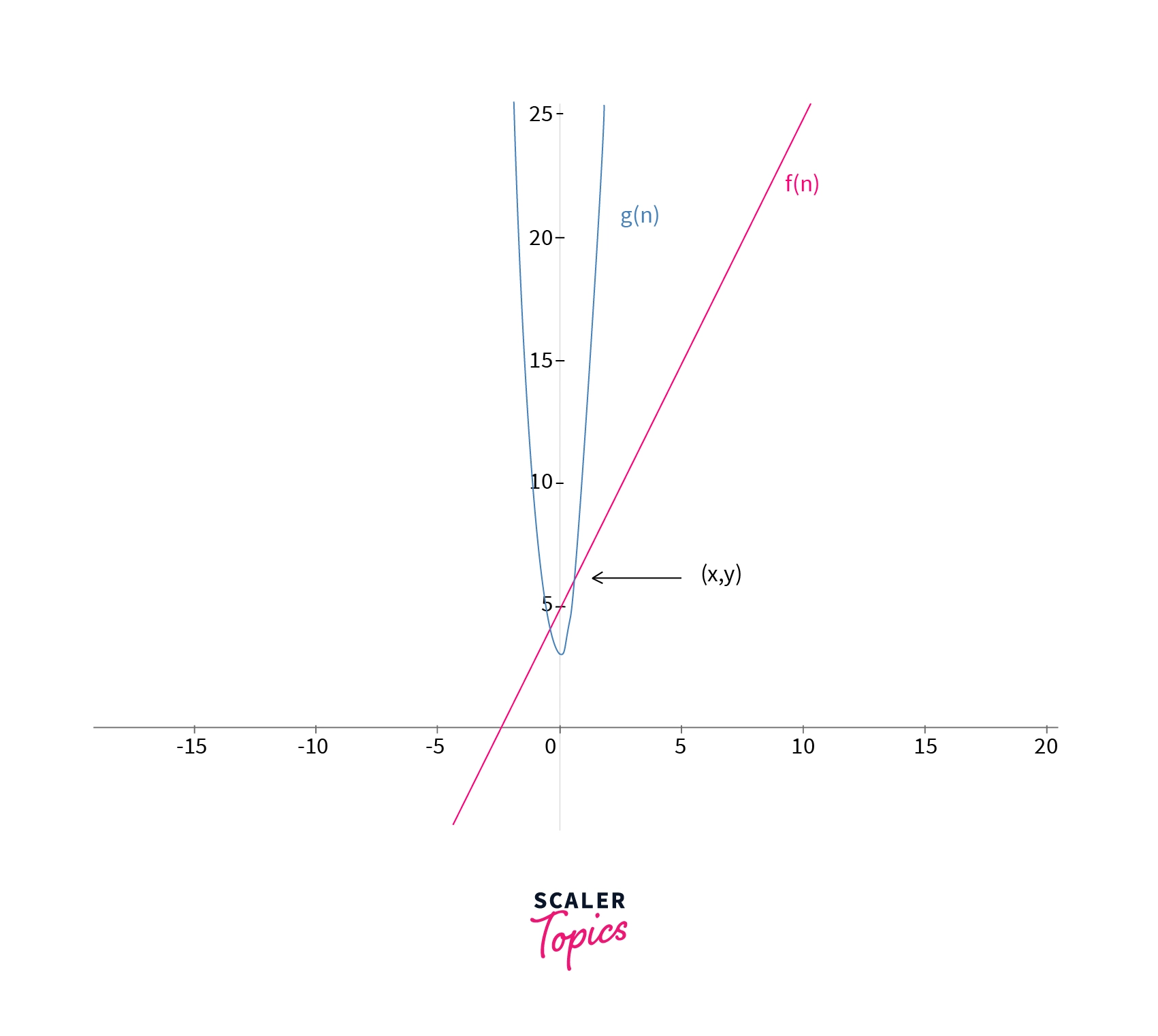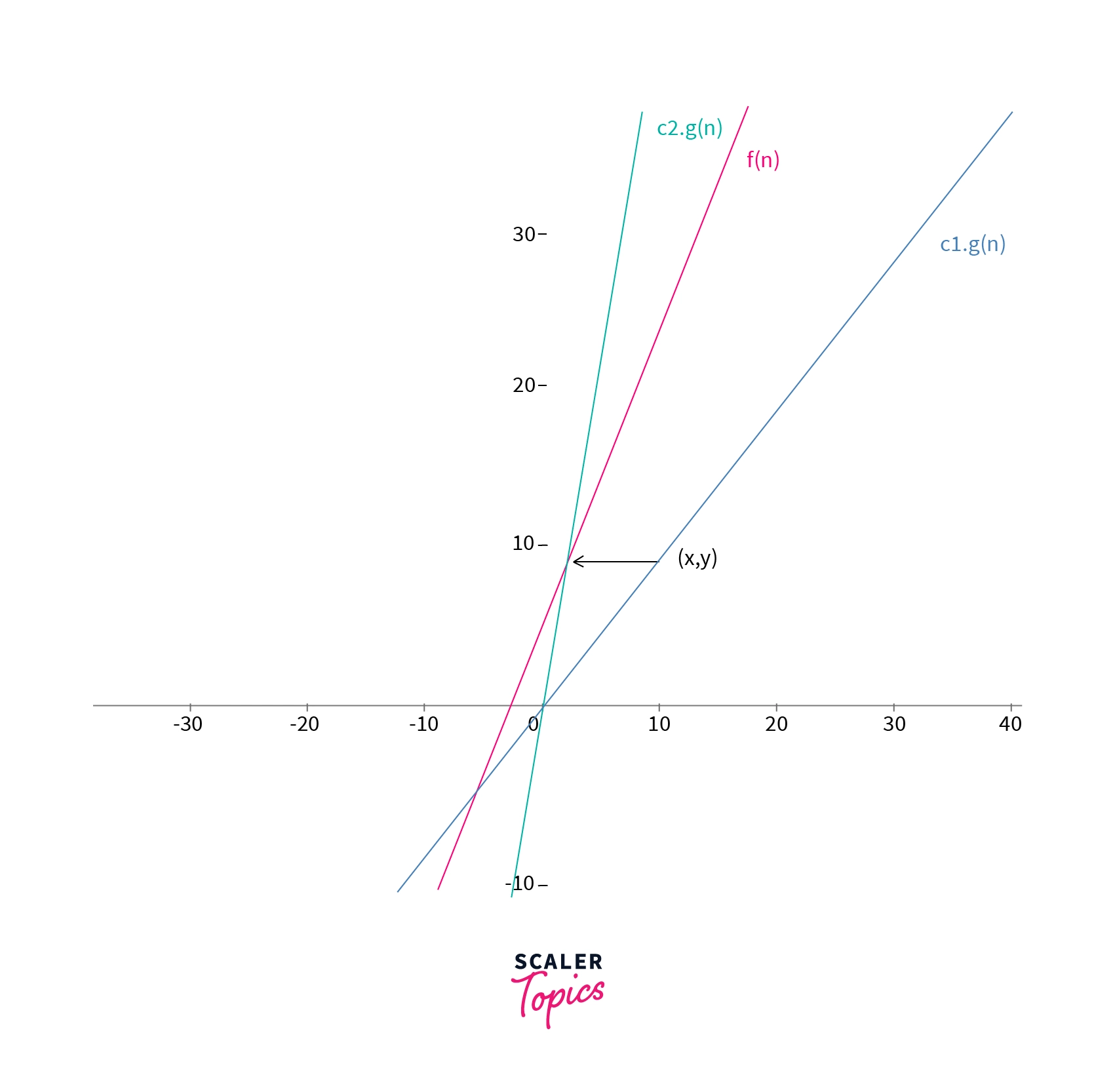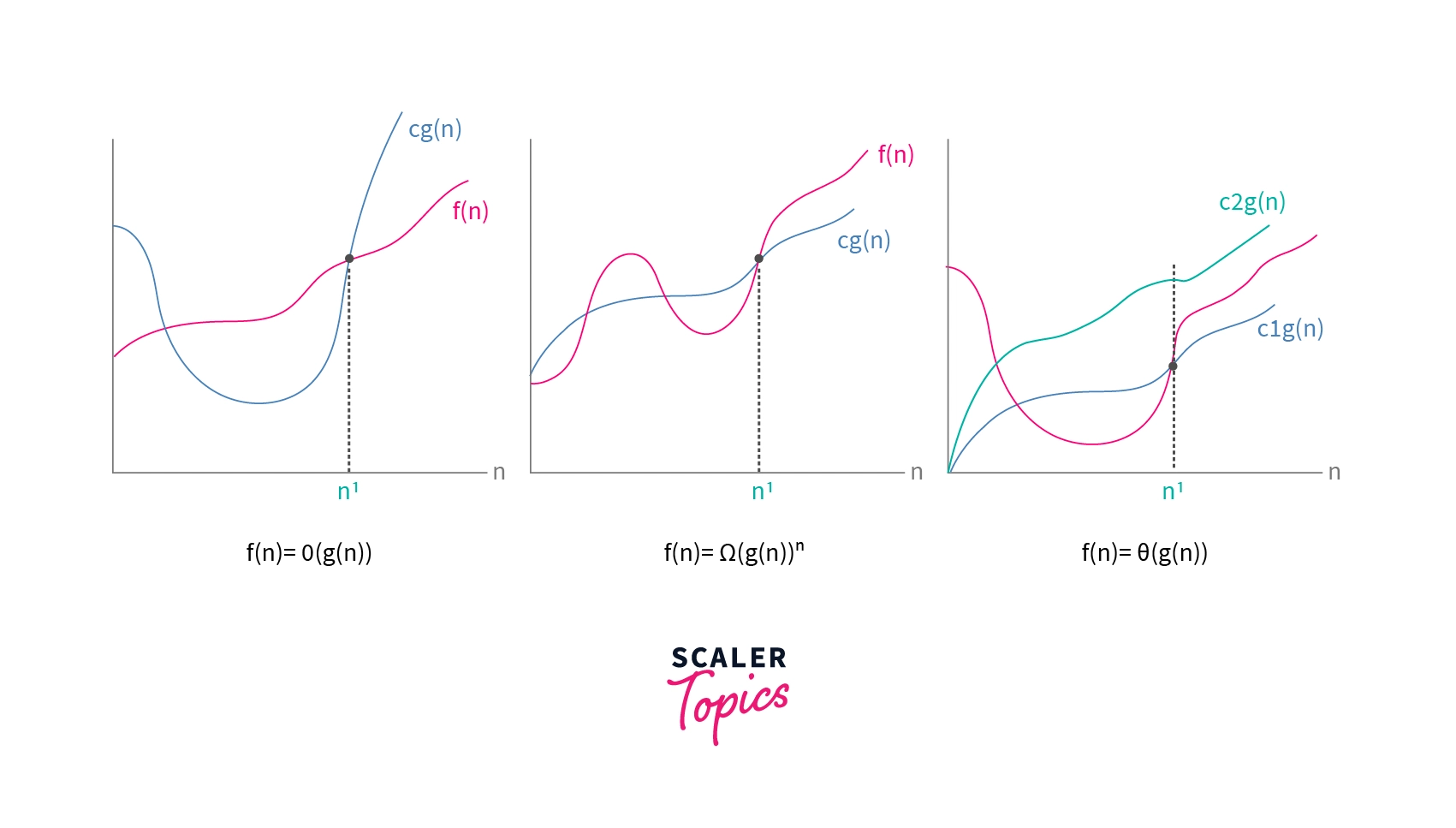Asymptotic notations in data structure are mathematical tools used to analyze the runtime of algorithms as input size grows. They enable comparison of algorithm efficiencies without manual runtime calculations, particularly beneficial for larger inputs. This article delves into different types of asymptotic notations and their application, excluding discussions on space complexity. Asymptotic notations offer crucial insights into algorithm performance, aiding in algorithm selection and optimization.
What is an Asymptotic Notation?
Asymptotic notation is a mathematical notation that is used to analyze the time complexity and the runtime of an algorithm for a large input.
For example if we want to compare the runtimes of the bubble sort algorithm and merge sort algorithm, we can use asymptotic notations to do this comparison.
In this article, we will discuss three types of asymptotic notations that are most commonly used to analyze time complexities of various algorithms. These are Big O notation (O), omega notation (Ω) and theta notation (θ).
Big O Notation (Represented as O)
Let f(n) <= c.g(n) for all
For example, let f(n) = 2n + 5.
In order to find the Big O of this function, we have to find another function f(n) <= c.g(n) for all
If we take
The comparison of the function

Let us now take the example f(n) = 7(n^2) + 3.
If we take a function
The Big O notation is also called as upper bound notation. For example for the above example, we can say that the upper bound of the function
:::
:::section{.tip}
NOTE:
For the example f(n) = 7(n^2) + 3, one may also determine the function
Omega Notation (Represented as Ω)
Let f(n) = Ω(g(n)) if there exists some positive constants f(n) >= c.g(n) for all
For example, let f(n) = 2n + 5.
In order to find the omega of this function, we have to find another function f(n) >= c.g(n) for all
If we take n >= 0 and c = 1. Hence, we can say that the function
The comparison of the function n > x.

Let us now take the example f(n) = 7(n^2) + 3.
If we take a function c = 1 and n' = 0. So, we can say that the function
The omega notation is also called as lower bound notation. For example for the above example, we can say that the lower bound of the function
NOTE:
For the example
Theta Notation (Represented as θ)
Let f(n) = θ(g(n)) if there exists some positive constants
For example, let f(n) = 2n + 5.
In order to find the theta of this function, we have to find another function
If we take
The comparison of the function

The theta notation is also called as tight bound notation. For example for the above example, we can say that the tight bound of the function
Graphical Representation for the Asymptotic Notations
Below are the graphical plots to represent the three asymptotic function (i.e. Big O notation, Omega notation and Theta notation) with respect to the input variable

Properties of Asymptotic Notation
Here are some properties that are satisfied by the asymptotic notations that are discussed above. All these properties can be easily proved by applying the equation we discussed in each asymptotic notation’s section.
General
If we have two functions f(n) = O(g(n)), then for a constant
Similarly,
If f(n) = Ω(g(n)), then c.f(n) = Ω(g(n)).
If f(n) = θ(g(n)), then c.f(n) = θ(g(n)).
Multiplying a constant scaler with the function will not affect any of the equations that we saw while discussing each asymptotic notation.
Transitive
If we have three functions f(n) = O(g(n)) and g(n) = O(h(n)), then f(n) = O(h(n)).
For example, if we have a function
- Since
- Also,
Now, if
Hence, we can can say that
Similarly,
If
If
We can verify this property using the equations that we have discussed in the section of each asymptotic notation.
Reflexive
If we have a function f(n), then by default, we can write,
We can verify this property using the equations that we have discussed in the section of each asymptotic notation.
Symmetric
If we have two functions f(n) = θ(g(n)), then we can also say that g(n) = θ(f(n)).
We can verify this property using the equation that we have discussed in the section of theta notation.
NOTE: This property only satisfies for theta
Transpose
If we have two functions f(n) = O(g(n)), then we can say that
We can verify this property using the equations that we have discussed in the section of each asymptotic notation.
NOTE: This property only satisfies for Big O
Conclusion
- Asymptotic notations in data structure are indispensable tools for understanding the efficiency of algorithms as input size grows.
- They enable straightforward comparison of algorithm efficiencies without the need for manual runtime calculations, especially beneficial for large inputs.
- The three primary types discussed here include Big O, Omega, and Theta notations, each offering unique insights into algorithm performance.
- Asymptotic notations are widely used in algorithm analysis and design, aiding in algorithm selection and optimization strategies.
- Various properties such as transitivity, reflexivity, symmetry, and transposed symmetry further enhance the utility and applicability of asymptotic notations in algorithm analysis.